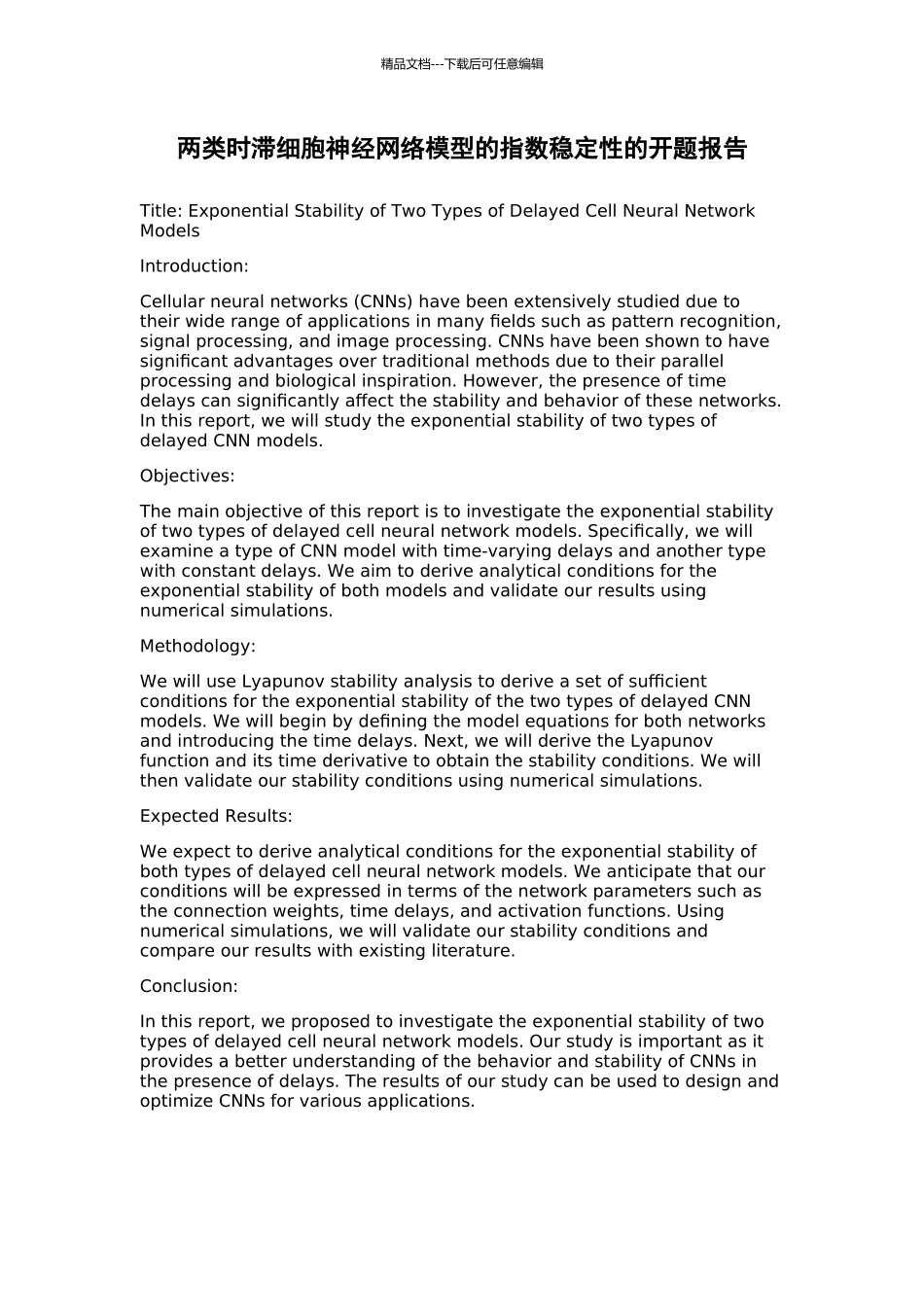精品文档---下载后可任意编辑两类时滞细胞神经网络模型的指数稳定性的开题报告Title: Exponential Stability of Two Types of Delayed Cell Neural Network ModelsIntroduction:Cellular neural networks (CNNs) have been extensively studied due to their wide range of applications in many fields such as pattern recognition, signal processing, and image processing. CNNs have been shown to have significant advantages over traditional methods due to their parallel processing and biological inspiration. However, the presence of time delays can significantly affect the stability and behavior of these networks. In this report, we will study the exponential stability of two types of delayed CNN models.Objectives:The main objective of this report is to investigate the exponential stability of two types of delayed cell neural network models. Specifically, we will examine a type of CNN model with time-varying delays and another type with constant delays. We aim to derive analytical conditions for the exponential stability of both models and validate our results using numerical simulations.Methodology:We will use Lyapunov stability analysis to derive a set of sufficient conditions for the exponential stability of the two types of delayed CNN models. We will begin by defining the model equations for both networks and introducing the time delays. Next, we will derive the Lyapunov function and its time derivative to obtain the stability conditions. We will then validate our stability conditions using numerical simulations.Expected Results:We expect to derive analytical conditions for the exponential stability of both types of delayed cell neural network models. We anticipate that our conditions will be expressed in terms of the network parameters such as the connection weights, time delays, and activation functions. Using numerical simulations, we will validate our stability conditions and compare our results with existing literature.Conclusion:In this report, we proposed to investigate the exponential stability of two types of delayed cell neural network models. Our study is important as it provides a better understanding of the behavior and stability of CNNs in the presence of delays. The results of our study can be used to design and optimize CNNs for various applications.
